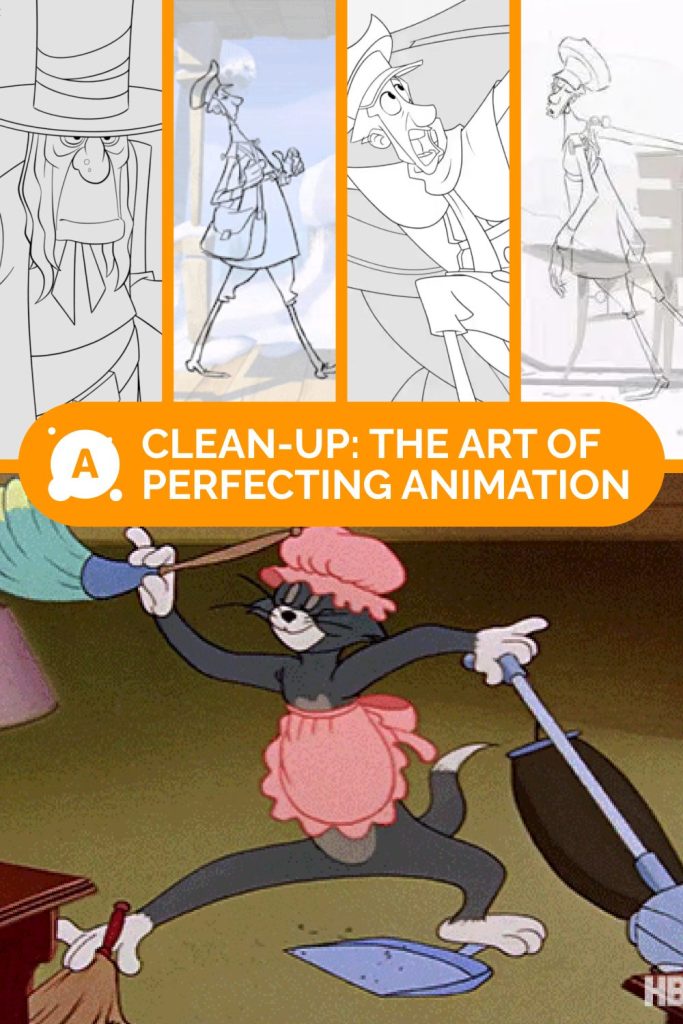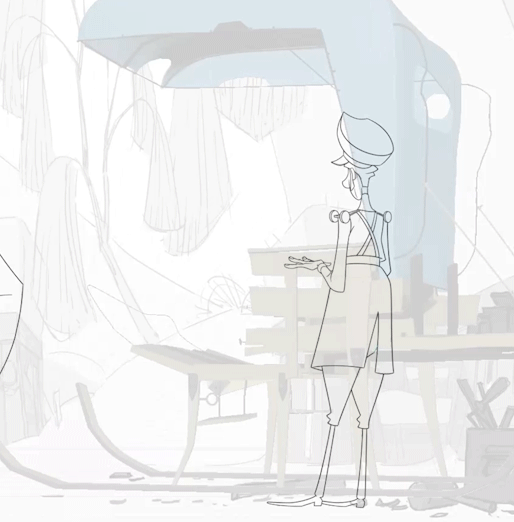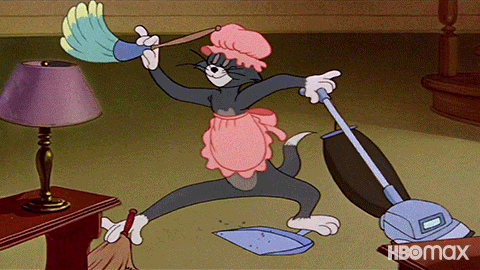
What Give Animation That Polished Look?
Have you ever wondered what clean-up in animation really means and why it’s such a critical step in the process? It’s the art of transforming rough animation into polished, frame-perfect visuals that captivate audiences. Renowned clean-up artist Christian Maymo, whose credits include Klaus, Space Jam: A New Legacy, Disenchantment by Disney, and Looney Tunes Cartoons, is here to share his expertise. With his guidance at AnimationClub School, you’ll learn how to bring clarity and beauty to every line, The art of perfecting animation, ensuring your animation truly shines.
Watch Christian Maymo’s full Q&A here!
What Is Clean-Up?
Clean-up in animation is the process of turning rough sketches into smooth, detailed, and professional frames. It highlights the animator’s hard work, transforming creative ideas into a polished final product. It is the art of perfecting your animation. Without clean-up, animations may look unfinished, losing their expressiveness and visual impact.
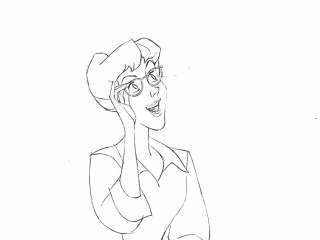
The Role and Skills of a Clean-up Artist
The primary goal of a clean-up artist is to bring characters to life in a way that feels authentic and cohesive. Their work ensures that every character on screen moves, speaks, and feels like a real, living being, seamlessly blending into the world of the film. By refining the lead animator’s sketches, clean-up artists soften rough lines, eliminate unnecessary marks, and add subtle details that elevate the animation. This process creates polished, harmonious visuals, making it appear as though a single artist crafted every frame. Ultimately, clean-up is about transforming raw creativity into clear, stunning artwork that perfectly captures the director’s vision.
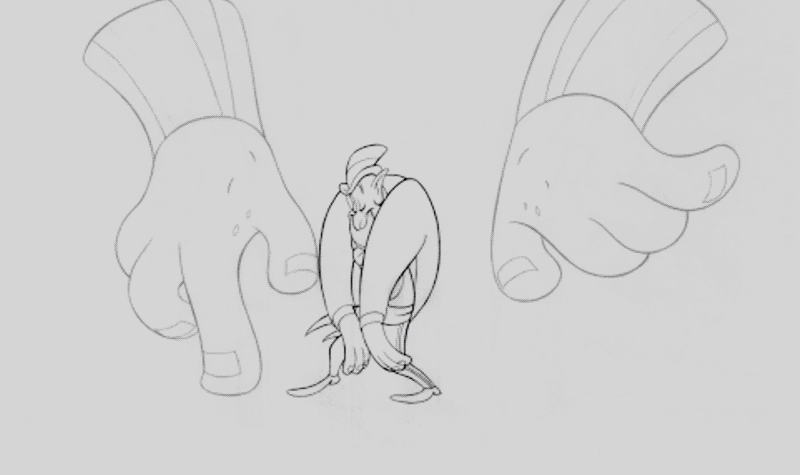
One of the key skills of a clean-up artist is the ability to adapt to different styles. A good clean-up artist must be ready to adjust to the project’s specific requirements, putting aside their personal preferences and stylistic traits for the sake of the film’s overall concept. This requires excellent drawing skills, as well as the ability to interpret rough sketches and translate them into final lines.
As the experienced clean-up artist Christian explains: «The clean-up process starts by taking rough animation and turning it into the final lines. It’s not just about ‘tracing’ the drawings, but making sure the character stays within the model and conveys emotion and movement. It requires attention to detail and, of course, time.»
Attention to Detail and the Role of Patience
The clean-up process demands meticulous attention to the minutiae in animation. The final version of the animation is the last stage of the process, and the artist must check their work multiple times to ensure each frame meets all the requirements. To be successful, it’s not just about focusing on the lines but having a passion for the work. This is one of those stages where you can’t give up, even if the deadlines are tight, and the job seems overwhelming.
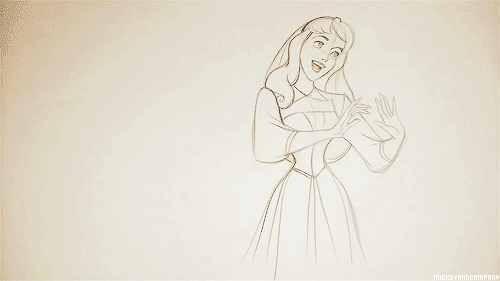
As Christan emphasizes: «Passion for the work — it might sound like a cliché, but it’s really necessary to overcome the difficulties. There will be ups and downs, and you will have to pour a lot of time and soul into each frame, even when everyone around you is rushing.»
Why Clean up Artist Are Worth Their Wieght In Gold
Using Tools to Perfect the Work
In clean-up, it’s not only about drawing well but also about being able to work with programs. Modern animation is created in vector-based drawing programs or specialized animation software, like Toon Boom Harmony, TVPaint, Adobe AfterEffects, and others, which offer a wide range of tools. These software tools, such as the pen tool, allow the animator to work with lines, smoothing with precision and speeding up the process. But, it still requires the artist’s careful attention so as not to lose the nuances of the drawing.
In Toon Boom Harmony, for example, the “Pencil” tool offers the ability to create organic and natural lines, making it particularly useful for projects requiring a more artistic touch. This tool allows animators to adjust the shape and thickness of lines easily, ensuring they meet the creative needs of the animation. Other vector-based programs, such as Adobe Illustrator or Inkscape, are also widely used in animation. These tools enable animators to create scalable vector graphics that can be effortlessly edited and manipulated. While the lines in these programs are typically smoother and less expressive than raster images, they are ideal for tasks like designing characters, backgrounds, or props, especially in TV animation where integration into the workflow is essential.
Clean-up in Klaus: A Practical Example
The film Klaus was a true breakthrough in animation, combining traditional hand-drawn animation with modern technology. SPA Studios, where Christian worked, used an innovative approach, which made the clean-up process in this project particularly challenging and exciting.
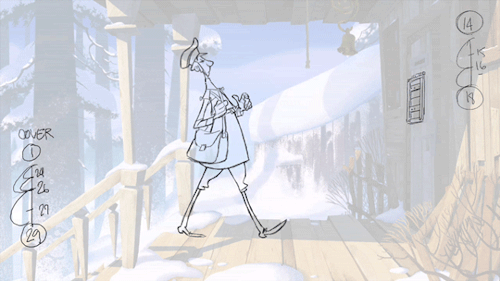
The characters in Klaus had a unique style — they were drawn in a minimalistic but detailed manner. The clean-up stage included several key tasks: refining character shapes, smoothing lines, eliminating unnecessary details, and adhering to approved models. All of these aspects required precision and skill to maintain the harmony and style of the original sketches.
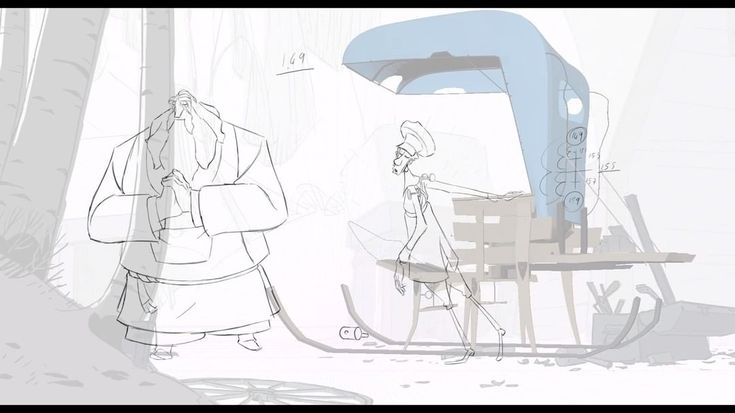
One of the challenging aspects of the work was adding lighting and shadows to the 2D-animated characters using 3D tools. This required special attention during clean-up to ensure the lines and shadows fit together naturally. To make the effects look seamless, they had to utilize software plug-ins, knowledge of the node tree, and their drawing skills. By Working with such technologies, Christian and his team had to ensure that the light and shadows fell on the characters exactly as intended.
Clean up In Action
Working with Toon Boom Harmony allowed the artists to adjust line thickness and easily give them the required texture. Toon Boom Harmony Vectors use mathematical equations rather than pixels, and individual elements can be moved and adjusted without affecting the rest of the image, all while helping give the animation a hand-drawn look and creating a seamless working space. This flexibility with vector graphics played a key role in achieving Klaus’s unique, organic look. Additionally, attention to detail and the ability to stay true to the original sketches gave the film its distinctive atmosphere.
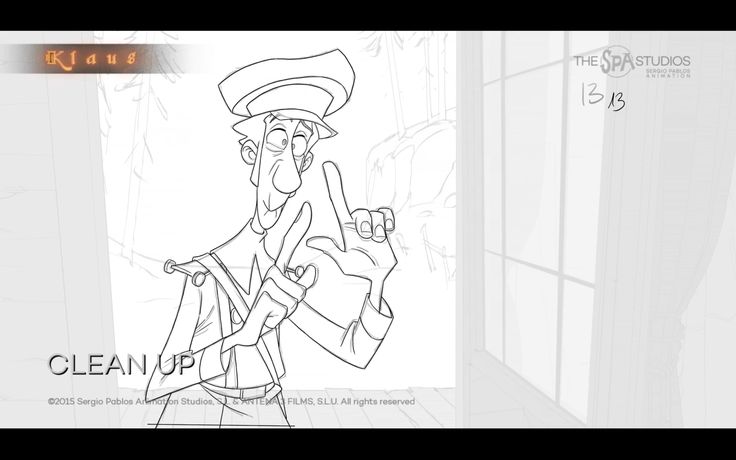
The clean-up process in Klaus involved working with the lines and constantly checking to ensure that characters and scenes met all requirements while maintaining style and animation integrity. Getting off the model without referencing the character sheet during the clean-up process is very easy. Sometimes, you even have to trace over the original model before drawing the cleaned-up motion for everything to look on point. This stage was crucial in making the characters feel alive and expressive despite the minimalist approach to drawing.
Conclusion: Teamwork and the Process of Perfection
The clean-up process is a team effort; every artist and stage is crucial to creating the final product. From the first sketch to the final lines, from working with characters to collaborating with other stages of animation, every element requires attention, patience, and a high level of skill.
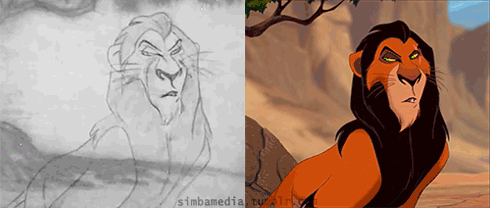
As Christian sums up: «In practice, everything depends on the complexity of the character and the scene. There are episodes where it takes two hours to finish one frame, especially if it’s a complex character or a dynamic scene with camera movement. However, not all scenes are like that. A simple static close-up scene can take one or two days.»
Ultimately, clean-up is both a technical process and a proper art form. Attention to detail, the ability to adapt the style, and collaboration with the team are the keys to making animation alive and magical.
Want to master the art of clean-up? Join our 2D animation course, where we will teach you all the intricacies and secrets of clean-up animation. On the course, you’ll learn to work with software, master the techniques and methods used in actual animation, and receive valuable professional tips. Sign up today and start your animation career with confidence!
